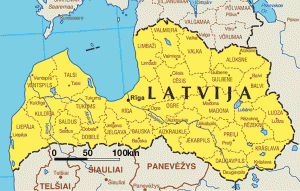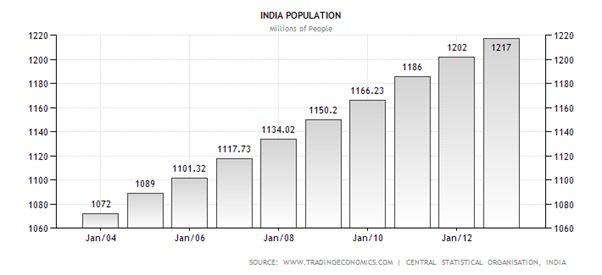As a country that has seen its fortunes swing in quick period, Latvia is again on the verge of creating history. On March 4th, 2013, Latvia formally applied for adoption of Euro as it currency.
The origin of Latvia dates back to 8th century A.D. and owes it to Latgalians, one of the four ethnic Baltic tribes and from which the country derives its name. The country subsequently came under the influence of Germans, Poles and Swedes in most of its history. It remained independent for a short-while in 1920s and 1930s before being annexed by USSR in 1940. The country served as a soviet republic from 1940 to 1991, till the break-up of the Soviet Union. The 1922 constitution of the country which affirmed Latvia as an independent state was subsequently re-established in 1991.
With an area of sixty-four thousand square kilometres, Latvia ranks as 124th in the world. It shares land borders with Russia, Estonia, Lithuania and Belarus and has a coastline of 498 sq. km making its location extremely strategic for accessing the Baltic States and the Russian market. In terms of demography, nearly one-third of the population is Russian with native Latvians forming the remaining population along with other minorities. The total population is roughly about 2.1 million with an unemployment rate of 14%.
Economy
The economy of the country is predominantly agrarian based with nearly one-third of its land dedicated for cultivation of crops. The main available mineral reserves are dolomite, limestone, clay and peat and the country also has scarce oil reserves in the Kurzeme Peninsula. The GDP is estimated at 27 billion USD in actual figure and 37 billion USD on PPP basis with an expected growth rate of 4.5% for 2012-13 & exports contributing nearly one-third of the GDP. Private sector controls 2/3rd of the economy with airline and telecommunication being the two major sectors that are controlled by the state. The country is a member of EU, UN, NATO, IMF &WTO. Its major trading partners are Lithuania(18.3%), Germany(10.4%), Estonia (10.2%) and Russia(9.5%).
The currency that was presently being followed by this country is Latvian Lats. The Lats were first introduced in 1922, before it was replaced by the Soviet Rublis at par in 1940. After Latvia emerged as an independent state again, it adopted Lats in 1993. Lats is today the fourth most valued currency in the world after the Kuwaiti Dinar, Bahraini Dinar and Omani Rial. In fact, the 500 Lati note is the third most expensive note in the world after 10,000 Singapore Dollar and 1000 Swiss Francs. At the current exchange rate, 1 Latvian Lats is equivalent to 1.84 USD or 1.43 Euro.
The growth story
After re-adoption of the Lats in 1993, the economy was quickly able to turn around with inflation dropping from 958% in 1992 to 25% in 1995 and 1.8% in 2002. In fact during the period 2002-2007, Latvia was among the fastest growing European countries with GDP growth ranging from 6.5% to 8.5%. However, the growth was largely fuelled by the real estate bubble in the country with prices rising by almost 5% on a monthly basis. The financial crisis of 2008, led to an emergency bailout of 7.5 billion Euros by the International Monetary Fund and EU followed by the nationalisation of the second largest bank of Latvia, Parex Bank. The economy shrunk by 20% of its GDP in 2008, but has recovered since then and grew by 4.5% in 2012-13.
So why should Latvia join the Euro-zone?
Latvia joined the European Union in 2004 with the intention of adopting the Euro by 2008. However the Euro-zone is presently not in the best of state following the 2008 crisis largely due to the huge sovereign debts by Portugal, Ireland, Greece and Spain. So why should Latvia want to join it when its own economy is growing faster than Europe? For a country like Latvia, being part of the Eurozone gives it access to one of the largest markets while subsequently devaluing its strong currency. A weaker currency will help in increasing exports of agricultural products and timber, the primary products it produces. Moreover, the demand from EU may help in development of the local fisheries industry, which despite a long coastline is not well-developed. Furthermore, Latvia has shown strong recovery in recent years with S&P upgrading its rating to BBB in long term and A-2 in short term with outlook as positive in November last year. So joining the Eurozone would further help in its growth story.
The key reason for entering the Eurozone in 2014 is however slightly different. The restrictions on work permits imposed by most countries in EU lapse on 31st December, 2013 (except Switzerland which can have the restriction till 31 May, 2019). This will enable residents of Latvia to work anywhere in EU without any restriction, the main reason behind the decision to accept the common currency. The average per capita income for EU ($35185) was more than twice that of Latvia ($15900) in 2011. So an average Latvian will have the opportunity to make twice as much wealth by finding work in other parts of EU.
Monetary integration with EU will help Latvia to manage its finances better as it will be adopting an undervalued Euro in comparison to its overvalued currency. The fiscal deficit which rose to 7.7% in 2010 is presently in the range of 2-2.5% in the current fiscal year. However, the road might not be as smooth as Latvia hopes it to be.
Opening up the labour market in 2014 is likely to be met by stiff opposition in the streets of Europe over fears of jobs being taken by eastern Europeans like Romanians who are ready to work for low wages and abysmal living condition. Latvians might be perceived similarly by the rest of Europe. UK, which happens to be one of the power houses in the region has called for a referendum whether to remain part of the EU in 2015. In case UK does vote against remaining a part of it, it might unravel the EU with France joining UK on the critical question of work permits.
Latvia , though, appears to have made the switch to Euro at the right moment!

































